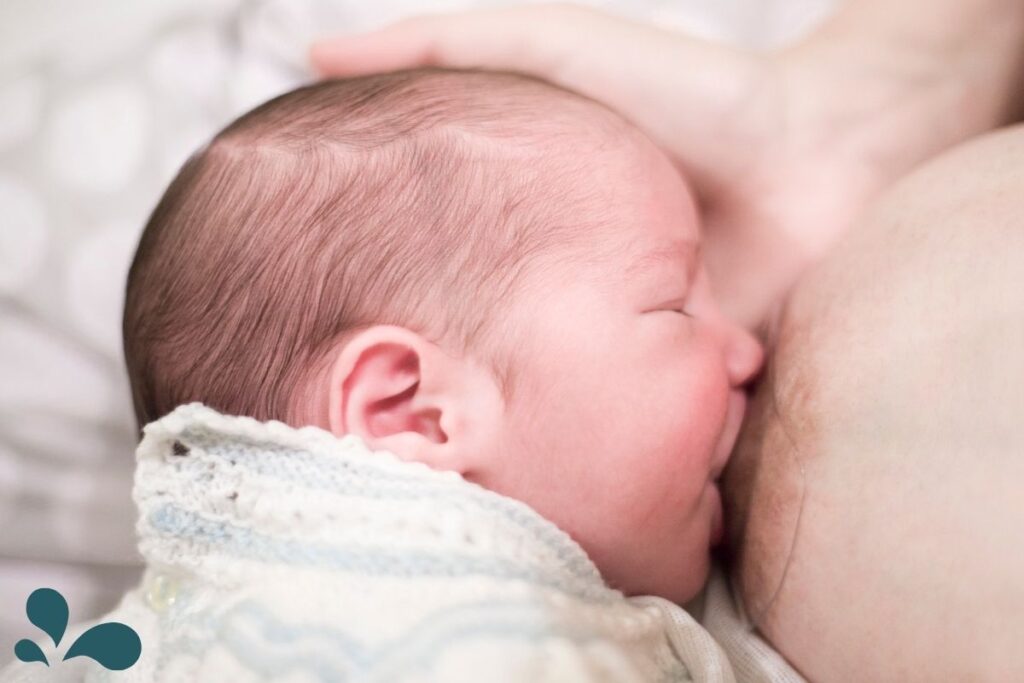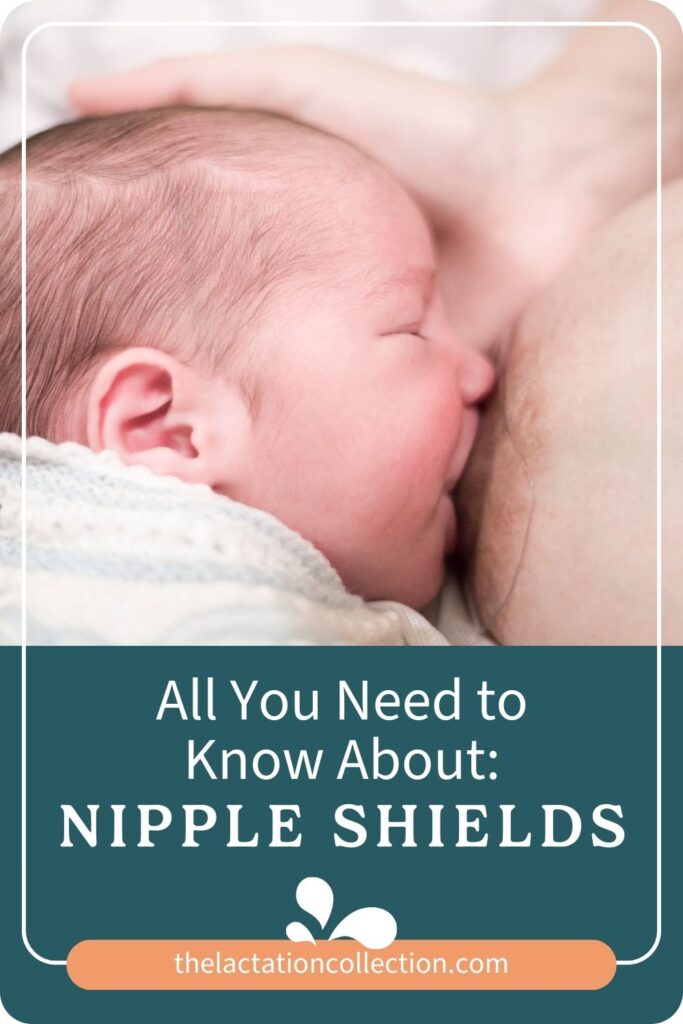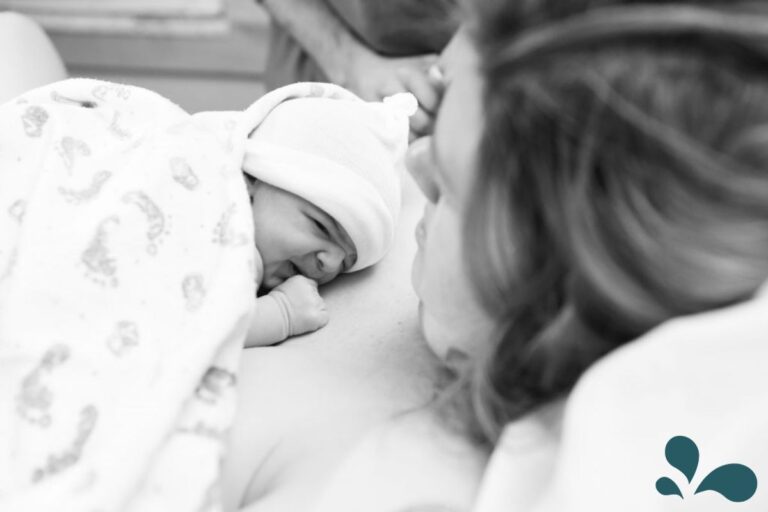If you mention nipple pain at all in the hospital, you’re more likely to get handed a nipple shield with potentially no instruction. Here’s the reality, nipple shields are meant to be temporary and should always be used under the direction of an International Board Certified Lactation Consultant (IBCLC). A nipple shield is often a bandaid that is used to cover up something that has an underlying issue.
If you are experiencing pain, there is an underlying issue that needs to be addressed. An IBCLC can help you identify the source of your pain and help you fix it. In the meantime, let’s go over everything that you need to know about nipple shields.

Sore Nipples & Nipple Shields
Let’s start with what nipple shields should NOT be used for: sore nipples. If your nipples are sore, start with nipple balm and/or breast shells. Breast shells are used in-between feedings to help your nipples not rub against clothing. These products will help your nipples heal. If your nipples are sore after establishing feeding or after a few days, there’s a chance that there is something up with baby’s latch, and you should reach out to IBCLC at that point.
When Nipple Shields Should Be Used
Nipple shields come in handy when you’ve tried absolutely everything else. They should be used as a last-ditch effort. That said, it’s better to have baby remove the milk from the breast instead of supplementing with formula, so if a nipple shield is what you need to use in the interim while you and baby figure things out, then use a nipple shield.
Now, there are some situations where nipple shields should be strongly considered:
- Baby struggles with sucking or has a weak suck (this can include medical issues)
- Premature babies who haven’t fully developed a suck reflex
- Mama has flat or inverted nipples
- Baby needs additional stimulus to encourage sucking
Again, consult with an IBCLC to determine if a nipple shield is the right step for you.

Using a Nipple Shield Correctly
You want your nipple shield to fit snugly around your nipple but not tightly. If your nipple shield is too tight, it can cause mastitis or clogged ducts. You’ll also want to be sure that the shield isn’t too big because then baby will only shallowly latch, which will result in baby not getting adequate milk extraction.
Like any other method of breastfeeding, you want baby to latch deeply onto the nipple shield. To promote a deep latch, be sure to check out our blog post on latching.
If you’ve used the shield for more than a few feedings, then you’ll need to monitor baby’s urine and fecal output. You’ll also want to work with an IBCLC or pediatrician to check baby’s growth in weight.

Weaning Off of the Nipple Shield
Babies develop habits quickly. When you’re ready to wean baby off of the nipple shield, there are a few tricks that will ease the process.
- Encourage a deep latch and shape your nipple (gently) as baby latches.
- Give baby an incentive to start feeding by squeezing some milk out and leaving it on your nipple before having baby latch.
- Gently squeeze your breast during feeding to act as a reward after a successful latch.
If your baby is struggling to accept the breast without the shield, there are a few things that you can try.
- Nurse skin-to-skin.
- Pump a bit of milk out of each breast before the feeding to elongate the nipple and help the breast be less firm.
- Feed when baby is relaxed, rather than waiting until baby is ravenously hungry.
- Try different nursing positions.
- Nurse baby when baby is just waking up or falling asleep.
- Let baby use your nipple as a pacifier to get used to the sensation.
- Massage your nipple to harden and shape it before a feeding.
If baby is still struggling after trying this list, call in a professional (IBCLC) who can help you figure out exactly what is going on and develop a plan for you.








